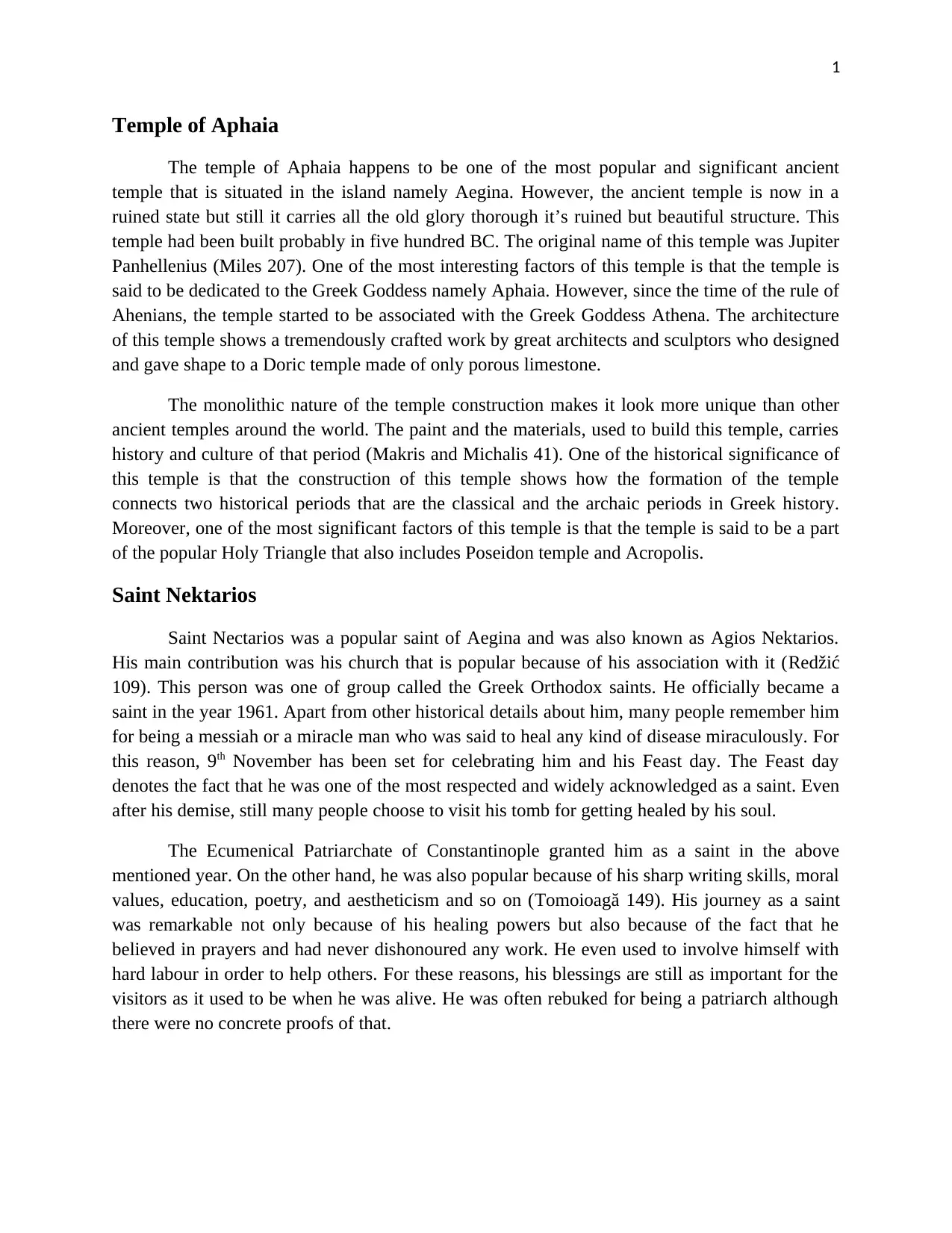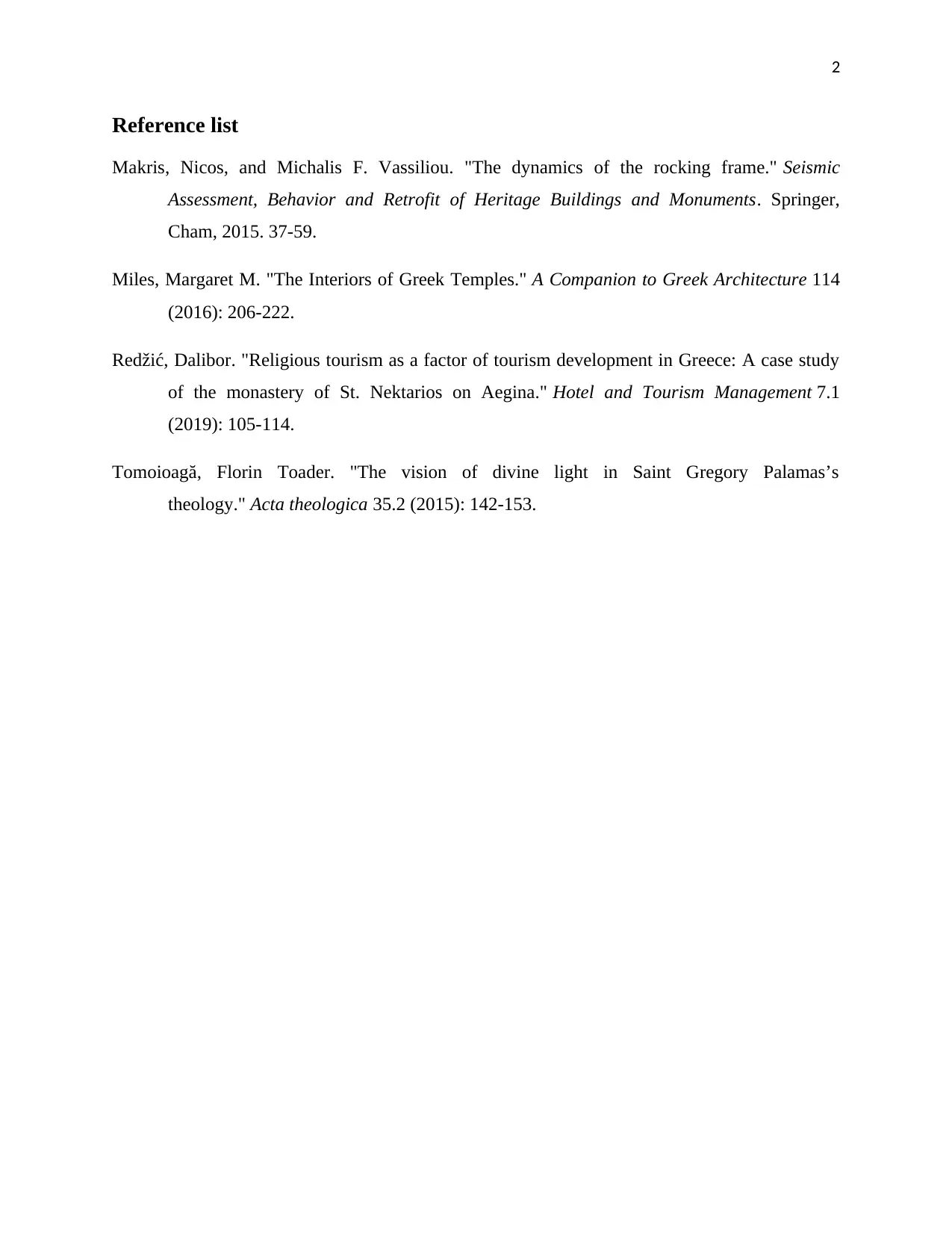Ancient History Journal: Aegina Temple, Saint Nektarios, Delphi Oracle
VerifiedAdded on 2022/10/17
|3
|697
|16
Journal and Reflective Writing
AI Summary
This journal entry provides a detailed exploration of two significant historical sites and figures: the Temple of Aphaia on Aegina and Saint Nektarios. The Temple of Aphaia, a Doric temple dating back to 500 BC, is examined for its architectural significance and its connection to both classical and archaic Greek periods. The journal then transitions to Saint Nektarios, a revered saint of Aegina, discussing his life, contributions, and the continued importance of his legacy, including his healing powers and writings. The assignment also covers the Temple of Apollo at Delphi, its role in ancient Greece, and its significance as a place of prophecy and religious discussion. It delves into the temple's architecture, its connection to Greek mythology, and its role in the worship of Apollo and other deities. The journal also touches upon the Apollonian and Dionysian principles and provides historical context through timelines and references.
1 out of 3










![[object Object]](/_next/static/media/star-bottom.7253800d.svg)